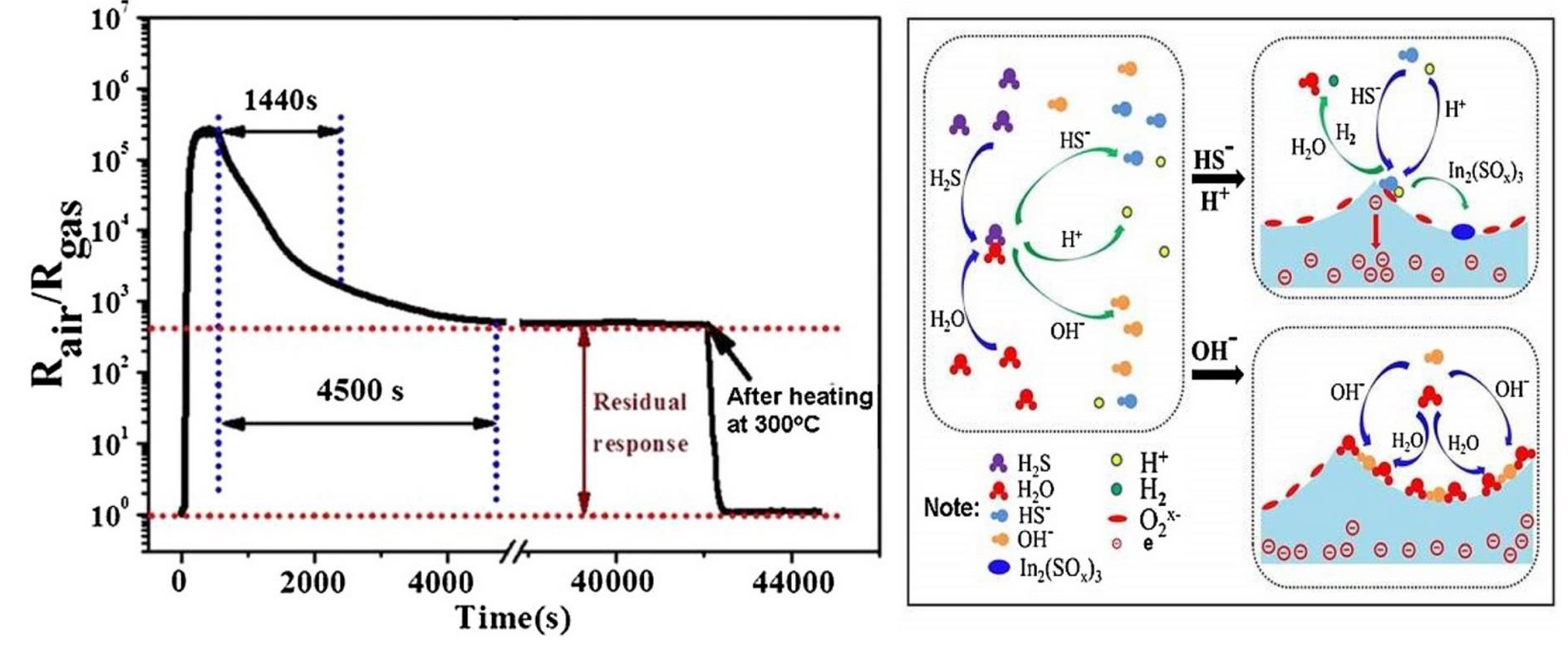Room temperature H2S gas sensing properties of In2O3 micro/nanostructured porous thin film and hydrolyzation-induced enhanced sensing mechanism
作者:Yingying Wang, Guotao Duan,Yudong Zhu, Hongwen Zhang, Zongke Xu, Zhengfei Dai, and Weiping Cai,
期刊:Sensors and Actuators B
卷(期)页:2016, 228, 74-84
全文链接:http://www.sciencedirect.com/science/article/pii/S092540051630003X

The micro/nanostructured orderly porous In2O3 ultrathin film and its gas sensing devices are fabricated via the solution-dipping monolayer organic colloidal template. Such In2O3 thin film is of about 200 nm in the apparent thickness and ordered porous structure. The porous In2O3 film-based sensor has exhibited ultrahigh response to H2S at room temperature, more than two orders of magnitude higher than the previously reported highest value. Further experiments have demonstrated that the ambient humidity plays a crucial role in the ultra-highly enhanced gas sensing to H2S at room temperature. A sensing mechanism based on ambient humidity-induced H2S hydrolyzation is presented, including hydrolyzation-induced desorption of the chemisorbed oxygen and formation of water thin film on the In2O3 surface, which can well explain the ultrahigh sensing of In2O3 to H2S at room temperature. An In2O3-based gas sensor array is thus designed for quantitative detection of H2S in the real environment with common interferential gases. This work gives a systematic and deep study of the humidity effects on responses of the In2O3-based sensors to H2S, and reveals the sensing mechanism of In2O3films to H2S at room temperature, indicating practical significance in designing and fabrication of the In2O3 film-based H2S sensors.
期刊:Sensors and Actuators B
卷(期)页:2016, 228, 74-84
全文链接:http://www.sciencedirect.com/science/article/pii/S092540051630003X

The micro/nanostructured orderly porous In2O3 ultrathin film and its gas sensing devices are fabricated via the solution-dipping monolayer organic colloidal template. Such In2O3 thin film is of about 200 nm in the apparent thickness and ordered porous structure. The porous In2O3 film-based sensor has exhibited ultrahigh response to H2S at room temperature, more than two orders of magnitude higher than the previously reported highest value. Further experiments have demonstrated that the ambient humidity plays a crucial role in the ultra-highly enhanced gas sensing to H2S at room temperature. A sensing mechanism based on ambient humidity-induced H2S hydrolyzation is presented, including hydrolyzation-induced desorption of the chemisorbed oxygen and formation of water thin film on the In2O3 surface, which can well explain the ultrahigh sensing of In2O3 to H2S at room temperature. An In2O3-based gas sensor array is thus designed for quantitative detection of H2S in the real environment with common interferential gases. This work gives a systematic and deep study of the humidity effects on responses of the In2O3-based sensors to H2S, and reveals the sensing mechanism of In2O3films to H2S at room temperature, indicating practical significance in designing and fabrication of the In2O3 film-based H2S sensors.
